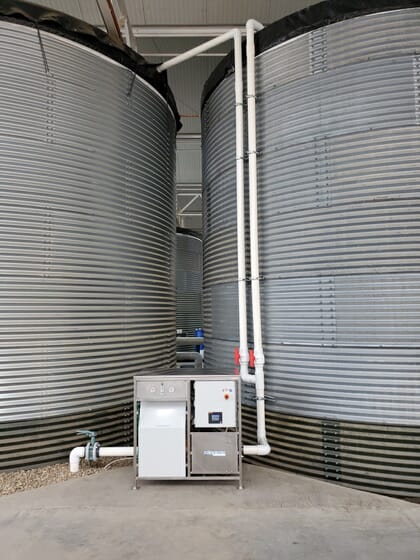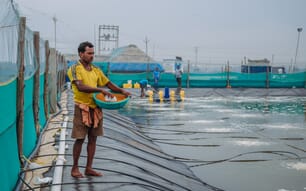
A new study by Moleaer, the nanobubble technology company, and researchers at Virginia Tech, concludes that:” Our results with the nanobubble technology showed that the nanobubbles alone did not significantly reduce bacteria (p > 0.05). However, a greater than 6 log cfu/mL A. hydrophila reduction and a greater than 3 log cfu/mL of V. parahaemolyticus reduction were achieved when nanobubble technology was combined with ultrasound (p < 0.05). The findings described in this study illustrate the potential of applying photodynamic inactivation and nanobubble–ultrasound antimicrobial approaches as alternative novel methods for inactivating fish and shellfish pathogens.”
Testing the waters
During the trial a nanobubble solution was provided using deionized water and pure oxygen gas using a Moleaer 25 L nanobubble generator. The preliminary experiments showed that nanobubbles produced by pure oxygen showed stronger antibiofilm and antimicrobial properties, compared to nanobubbles generated by pure carbon dioxide or air. A total of 1 mL of the previously washed bacterial cell suspensions was added to 9 mL deionized water containing nanobubbles. The solutions were exposed to ultrasound for 5, 10, and 15 minutes.
According to Moleaer, its nanobubble technology injects trillions of oxygen-rich nanobubbles into water. When combined with ultrasound, these nano-sized bubbles, 2,500 times smaller than a grain of salt, collapse and produce oxidants that inactivate pathogens and remove microbial biofilms.
The researchers themselves note that a combination of nanobubbles and ultrasound could be an interesting topic for “the fresh produce, aquaculture, and algae mass production systems in the photobioreactors, hydroponics, and aquaponics industries as alternative approaches to treat recycling water. Develop a photo- or nanobubble-reactor may provide a better approach for water treatment in RAS and aquaponics which will solve the permit requirement issues as well.”
Reza Ovissipour, assistant professor at the Department of Food Science and Technology, at Virginia Tech said: “Based on our research, we found that nanobubbles when combined with ultrasound achieved a reduction in aquatic pathogens that are common causes of seafood-borne disease and illness such as gastroenteritis. These findings provide a new antimicrobial approach for reducing fish and shellfish pathogens in our aquaculture industry.”
“Our technology has been tested and proven to eliminate or reduce waterborne pathogens, biofilms, and bacteria across industries. We welcome the findings from Virginia Tech and are excited to be at the forefront of developing new, sustainable alternatives for treating and preventing bacteria and harmful pathogens our food supply. The latest results are another testament to our capability to restore aquatic health, improve water quality, and reduce the usage of traditional chemicals for treating water,” said Nick Dyner, CEO of Moleaer.
In September, Arizona State University’s National Science Foundation Nanosystems Engineering Research Center for Nanotechnology Enabled Water Treatment (NEWT) found that Moleaer’s technology created a chemical-free advanced oxidation process, degrading and removing organic pollutants from water.



